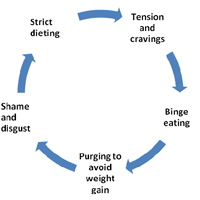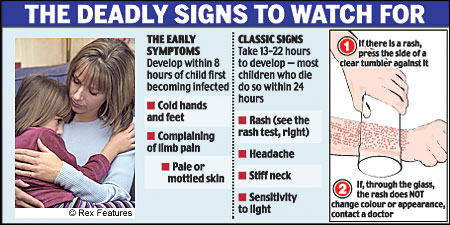What are they?
An eating disorder is a condition where a person has severe disturbances in their eating habits. These disturbances can include extreme reduction of food intake or extreme overeating. A person with an eating disorder feels extreme distress or concern about their weight and body shape.
Eating disorders frequently appear during adolescence or young adulthood, but they can develop during childhood or later in adulthood. Boys and males can have eating disorders too; but they are much more common in girls and women. The two most common eating disorders are anorexia and bulimia.

Anorexia nervosa is characterized by a distorted body image and intense fear of gaining weight. People with anorexia often use unhealthy methods to lose weight. Dieting and exercising excessively, self-induced vomiting, or misusing laxatives, diuretics or enemas are common ways to try to lose weight. Weighing one’s self repeatedly, portioning food carefully, and eating only very small quantities of certain foods are typical behaviors of a person with anorexia.
Treatment involves three components:
- Restoring the person to a healthy weight;
- Treating the psychological issues related to the eating disorder; and
- Reducing or eliminating behaviors or thoughts that lead to disordered eating, and preventing relapse.
 Bulimia nervosa is an eating disorder characterized by frequent episodes of binge eating, followed by frantic efforts to avoid gaining weight, known as purging. They often fear gaining weight, want desperately to lose weight, and are intensely unhappy with their body size and shape.Usually, bulimic behavior is done in secret and is accompanied by feelings of disgust or shame.
Bulimia nervosa is an eating disorder characterized by frequent episodes of binge eating, followed by frantic efforts to avoid gaining weight, known as purging. They often fear gaining weight, want desperately to lose weight, and are intensely unhappy with their body size and shape.Usually, bulimic behavior is done in secret and is accompanied by feelings of disgust or shame.
Treatment often involves a combination of options and depends on the needs of the individual. To reduce or eliminate binge and purge behavior, a patient may undergo nutritional counseling and psychotherapy, especially cognitive behavioral therapy (CBT), or be prescribed medication.
Treatable-Eating disorders are treatable, but no treatment plan is alike. It is best if the treatment is tailored to the patient’s individual needs. Treatment may include medical care and monitoring; medications; nutritional counseling; and individual, group and/or family psychotherapy. Some patients may also need to be hospitalized to treat malnutrition or to gain weight.













